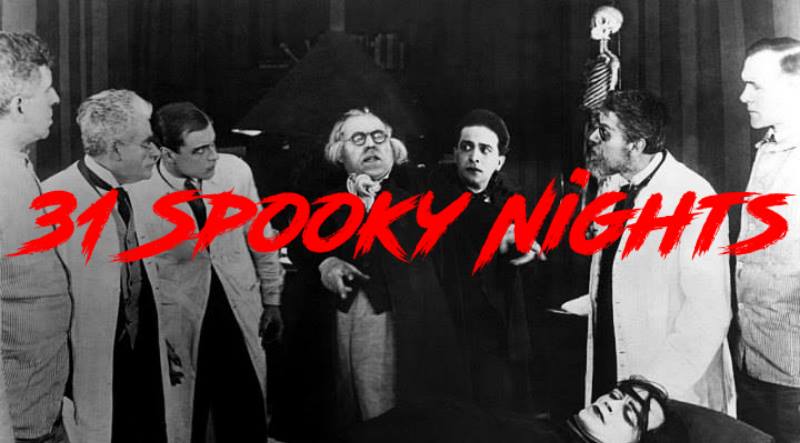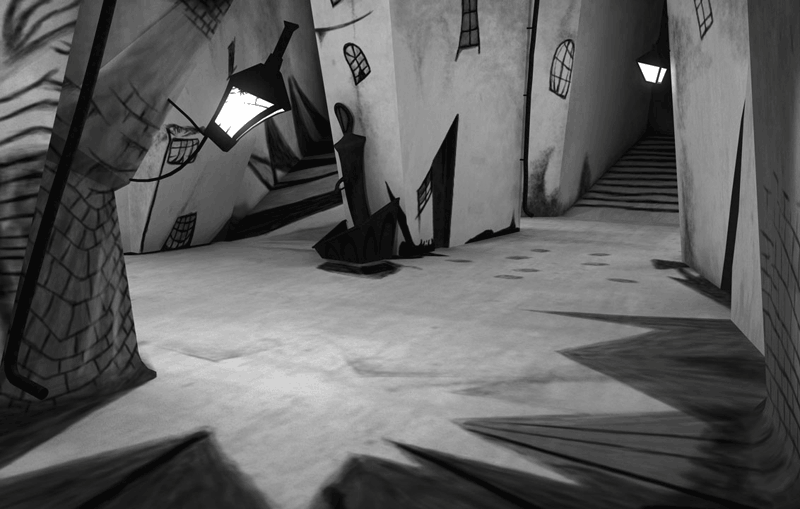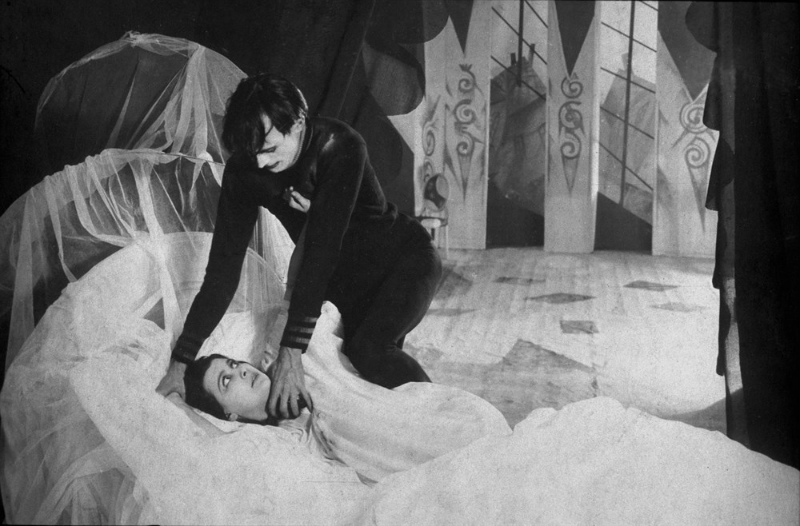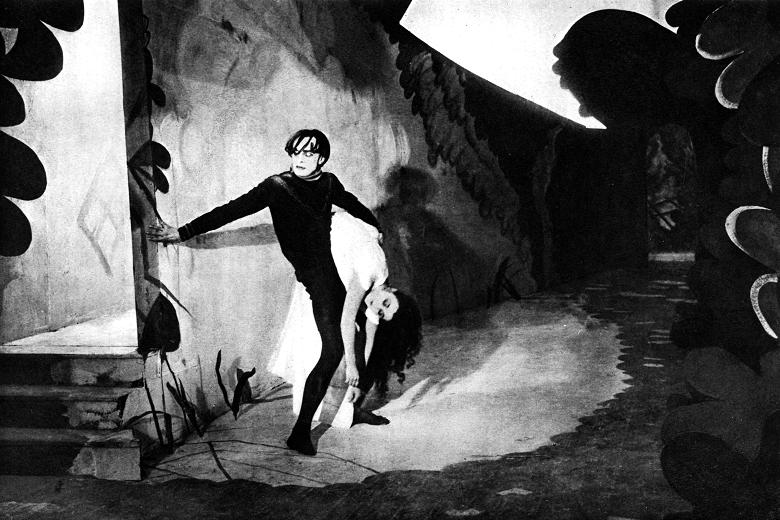
 Francis recalls in his memory the horrible experiences he and his fiancée Jane recently went through. It is the annual fair in Holstenwall and Francis and his friend Alan visit The Cabinet of Dr. Caligari, an exhibit where the mysterious doctor shows the somnambulist Cesare, and awakens him for some moments from his death-like sleep to predict the future. When Alan asks Cesare about his future, Cesare answers that he will die before dawn. Is there truth to these ghastly premonitions?
Francis recalls in his memory the horrible experiences he and his fiancée Jane recently went through. It is the annual fair in Holstenwall and Francis and his friend Alan visit The Cabinet of Dr. Caligari, an exhibit where the mysterious doctor shows the somnambulist Cesare, and awakens him for some moments from his death-like sleep to predict the future. When Alan asks Cesare about his future, Cesare answers that he will die before dawn. Is there truth to these ghastly premonitions?
Amelia: The whole way through this movie all I could think was, when is my moment of realization going to happen like in Portlandia? When am I going to charge at the screen, cackling madly as I tap at it and exclaim ‘I get it!’? Well, as it turns out, I didn’t need to have an ‘I get it!’ moment because it really wasn’t as complicated as Fred and Carrie would have you believe.
Billy: Wow. I am genuinely impressed with how much better this film held up compared to Nosferatu. Both are considered classics of German Expressionism, but while Nosferatu seems to have aged out of actually being enjoyable as something to kick back and watch on a Friday night, The Cabinet of Dr. Caligari still plays. It’s a monster movie, but, like Frankenstein, the real monster is the man who creates the beast. Not that I’d really call a somnambulist a beast, of course, but it’s 1920. Cinema is young. Let them have this one for how the creature acts more than how he looks.
Amelia: Weird is the first thing that comes to mind when I stop to think about The Cabinet of Dr. Caligari. Early European film is just all kinds of weird. I kind of like it, but I don’t love it. And it’s not really something I’d watch to de-stress myself at the end of the day. Silent movies aren’t my thing. They’re not anybody’s thing. C’mon, silent pictures were a start, but you can’t tell me movies didn’t get better with sound.

Billy: Aesthetically speaking, this film rocks. Straight up. There are no actual sets in The Cabinet of Dr. Caligari. Instead, all scenes take place in front of backgrounds that actually have the sets painted onto them, shadows and all. The effect of this is more akin to watching a play, allowing the film to take place in a world of impossible geometry. Windows are angular and pointed like knives towards our characters. The town itself is crooked with buildings that are packed next to each other in impossibly dense stacks. It’s a look that Tim Burton has tried for years to emulate, but The Cabinet of Dr. Caligari does is so steadfastly without compromise that it can’t be beat. Even the title cards are done with a pointed and off-kilter aesthetic! Maybe try taking away Burton’s entire budget and he could come close. I always appreciate film making done on a budget, and I think The Cabinet of Dr. Caligari shows its creativity in its seams.

Amelia: Much like Nosferatu, I found my interest waning while watching The Cabinet of Dr. Caligari. It’s not that I don’t understand what it was going for, it’s just not my scene. Honestly I feel like there’s a level of pretension needed to sit down and, not only watch such old cinema, but to enjoy it. I like old movies, I’ve yet to find a modern male actor that I like more than Humphrey Bogart, but there definitely comes a point when something is too old and too far removed from what people know and enjoy today. The Cabinet of Dr. Caligari can be appreciated for many things and seeing it once satisfies a morbid sort of curiosity, but just popping it in to sit and watch every couple of months? That stinks of feigned, overblown, fanfare for what you perceive is intelligence and superiority to the modern film viewer.
Billy’s getting huffy as he reads this over my shoulder because, you know, the film studies degree he has.
Billy: I will watch this movie again! Hahaha, I’m so sorry, Amelia. I went to film school. I’m a pretentious nerd, and I accept that wholeheartedly. What really keeps me engaged in The Cabinet of Dr. Caligari is the plot. The plot has twists and turns that reshape the story at every turn, unravelling threads left and right that change your understanding of everything that’s come before. The first time we realise Caligari is actually the director of the asylum? Mind blowing! The fact that he’s not the original Caligari at all? Whaaaaaat! And the end? It’s another twist! M. Night Shyamalan eat your heart out. Although it can often be a cop out to say “it’s all happening within a dream”, The Cabinet of Dr. Caligari got in there early enough to actually pull it off, and subtly change the meaning of the entire film as well.

Fun fact: the ending I just described, the ending that is actually in the final movie, was not present in the original script. In a movie with so many twists and turns (visually as well as textually) it makes sense to throw one more in there, but it was actually demanded by a studio who thought the film’s message would be too anti-authoritarian without it. This ends up being even more unsettling, however, because now you don’t know who to trust. The film has done such a great job at setting Caligari as the villain that even after he’s revealed to actually be a kind and caring keeper of Francis’ mental health, you can’t help but feel the final scene produces an ending where the villain triumphs and the only character who knows the truth about the situation is confined in isolation. Truly disconcerting when you consider the implications of where and when this film is made.
Spooky Verdict
Amelia: Three and a half Germanys out of ten










I can confidently say that I enjoyed The Cabinet of Dr. Caligari more than I enjoyed Nosferatu. It’s pacing is still bizarre and my attention still waned when long intervals of silent mouth-moving and arm flailing were shown, but there’s a part of me that was interested in this weird German expressionist movie. I don’t know if I’d ever watch it again, but it’s public domain and free on YouTube if you’re interested in a one-time Halloween viewing.
Billy: Eight and a half Germanys out of ten










I seriously think this film holds up. The plot chugs along a coherent, steady path but keeps you guessing. While some aspects are a little out there, there are some moving performances from many of the actors, and I’m not only being pretentious when I say I actually felt something for the characters when I watched The Cabinet of Dr. Caligari. Cesare is an awesome monster. I can see where a lot of inspiration for this movie either came from or led to. Elements of both Frankenstein and The Wolfman are present here, as are aspects of many horror films yet to come.


![[PODCAST] THE COMICS AGENDA: THIS WEEK AT MARVEL…IT’S BATMAN WEEK!?!](https://geekd-out.com/wp-content/uploads/2017/11/comics-agenda-2-150x150.jpg)

